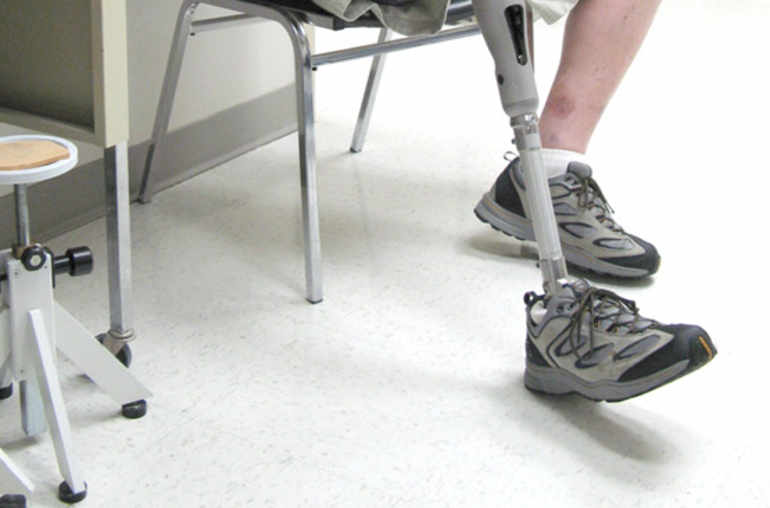PROTECT YOUR DNA WITH QUANTUM TECHNOLOGY
Orgo-Life the new way to the future Advertising by AdpathwayA tiny wireless chip placed at the back of the eye, combined with a pair of advanced smart glasses, has partially restored vision to people suffering from an advanced form of age-related macular degeneration. In a clinical study led by Stanford Medicine and international collaborators, 27 of the 32 participants regained the ability to read within a year of receiving the implant.
With the help of digital features such as adjustable zoom and enhanced contrast, some participants achieved visual sharpness comparable to 20/42 vision.
The study's findings were published on Oct. 20 in the New England Journal of Medicine.
A Milestone in Restoring Functional Vision
The implant, named PRIMA and developed at Stanford Medicine, is the first prosthetic eye device to restore usable vision to individuals with otherwise untreatable vision loss. The technology enables patients to recognize shapes and patterns, a level of vision known as form vision.
"All previous attempts to provide vision with prosthetic devices resulted in basically light sensitivity, not really form vision," said Daniel Palanker, PhD, a professor of ophthalmology and a co-senior author of the paper. "We are the first to provide form vision."
The research was co-led by José-Alain Sahel, MD, professor of ophthalmology at the University of Pittsburgh School of Medicine, with Frank Holz, MD, of the University of Bonn in Germany, serving as lead author.
How the PRIMA System Works
The system includes two main parts: a small camera attached to a pair of glasses and a wireless chip implanted in the retina. The camera captures visual information and projects it through infrared light to the implant, which converts it into electrical signals. These signals substitute for the damaged photoreceptors that normally detect light and send visual data to the brain.
The PRIMA project represents decades of scientific effort, involving numerous prototypes, animal testing, and an initial human trial.
Palanker first conceived the idea two decades ago while working with ophthalmic lasers to treat eye disorders. "I realized we should use the fact that the eye is transparent and deliver information by light," he said.
"The device we imagined in 2005 now works in patients remarkably well."
Replacing Lost Photoreceptors
Participants in the latest trial had an advanced stage of age-related macular degeneration known as geographic atrophy, which progressively destroys central vision. This condition affects over 5 million people worldwide and is the leading cause of irreversible blindness among older adults.
In macular degeneration, the light-sensitive photoreceptor cells in the central retina deteriorate, leaving only limited peripheral vision. However, many of the retinal neurons that process visual information remain intact, and PRIMA capitalizes on these surviving structures.
The implant, measuring just 2 by 2 millimeters, is placed in the area of the retina where photoreceptors have been lost. Unlike natural photoreceptors that respond to visible light, the chip detects infrared light emitted from the glasses.
"The projection is done by infrared because we want to make sure it's invisible to the remaining photoreceptors outside the implant," Palanker said.
Combining Natural and Artificial Vision
This design allows patients to use both their natural peripheral vision and the new prosthetic central vision simultaneously, improving their ability to orient themselves and move around.
"The fact that they see simultaneously prosthetic and peripheral vision is important because they can merge and use vision to its fullest," Palanker said.
Since the implant is photovoltaic -- relying solely on light to generate electrical current -- it operates wirelessly and can be safely placed beneath the retina. Earlier versions of artificial eye devices required external power sources and cables that extended outside the eye.
Reading Again
The new trial included 38 patients older than 60 who had geographic atrophy due to age-related macular degeneration and worse than 20/320 vision in at least one eye.
Four to five weeks after implantation of the chip in one eye, patients began using the glasses. Though some patients could make out patterns immediately, all patients' visual acuity improved over months of training.
"It may take several months of training to reach top performance -- which is similar to what cochlear implants require to master prosthetic hearing," Palanker said.
Of the 32 patients who completed the one-year trial, 27 could read and 26 demonstrated clinically meaningful improvement in visual acuity, which was defined as the ability to read at least two additional lines on a standard eye chart. On average, participants' visual acuity improved by 5 lines; one improved by 12 lines.
The participants used the prosthesis in their daily lives to read books, food labels and subway signs. The glasses allowed them to adjust contrast and brightness and magnify up to 12 times. Two-thirds reported medium to high user satisfaction with the device.
Nineteen participants experienced side effects, including ocular hypertension (high pressure in the eye), tears in the peripheral retina and subretinal hemorrhage (blood collecting under the retina). None were life-threatening, and almost all resolved within two months.
Future Visions
For now, the PRIMA device provides only black-and-white vision, with no shades in between, but Palanker is developing software that will soon enable the full range of grayscale.
"Number one on the patients' wish list is reading, but number two, very close behind, is face recognition," he said. "And face recognition requires grayscale."
He is also engineering chips that will offer higher resolution vision. Resolution is limited by the size of pixels on the chip. Currently, the pixels are 100 microns wide, with 378 pixels on each chip. The new version, already tested in rats, may have pixels as small as 20 microns wide, with 10,000 pixels on each chip.
Palanker also wants to test the device for other types of blindness caused by lost photoreceptors.
"This is the first version of the chip, and resolution is relatively low," he said. "The next generation of the chip, with smaller pixels, will have better resolution and be paired with sleeker-looking glasses."
A chip with 20-micron pixels could give a patient 20/80 vision, Palanker said. "But with electronic zoom, they could get close to 20/20."
Researchers from the University of Bonn, Germany; Hôpital Fondation A. de Rothschild, France; Moorfields Eye Hospital and University College London; Ludwigshafen Academic Teaching Hospital; University of Rome Tor Vergata; Medical Center Schleswig-Holstein, University of Lübeck; L'Hôpital Universitaire de la Croix-Rousse and Université Claude Bernard Lyon 1; Azienda Ospedaliera San Giovanni Addolorata; Centre Monticelli Paradis and L'Université d'Aix-Marseille; Intercommunal Hospital of Créteil and Henri Mondor Hospital; Knappschaft Hospital Saar; Nantes University; University Eye Hospital Tübingen; University of Münster Medical Center; Bordeaux University Hospital; Hôpital National des 15-20; Erasmus University Medical Center; University of Ulm; Science Corp.; University of California, San Francisco; University of Washington; University of Pittsburgh School of Medicine; and Sorbonne Université contributed to the study.
The study was supported by funding from Science Corp., the National Institute for Health and Care Research, Moorfields Eye Hospital National Health Service Foundation Trust, and University College London Institute of Ophthalmology.


 8 hours ago
1
8 hours ago
1


















.jpg)






 English (US) ·
English (US) ·  French (CA) ·
French (CA) ·